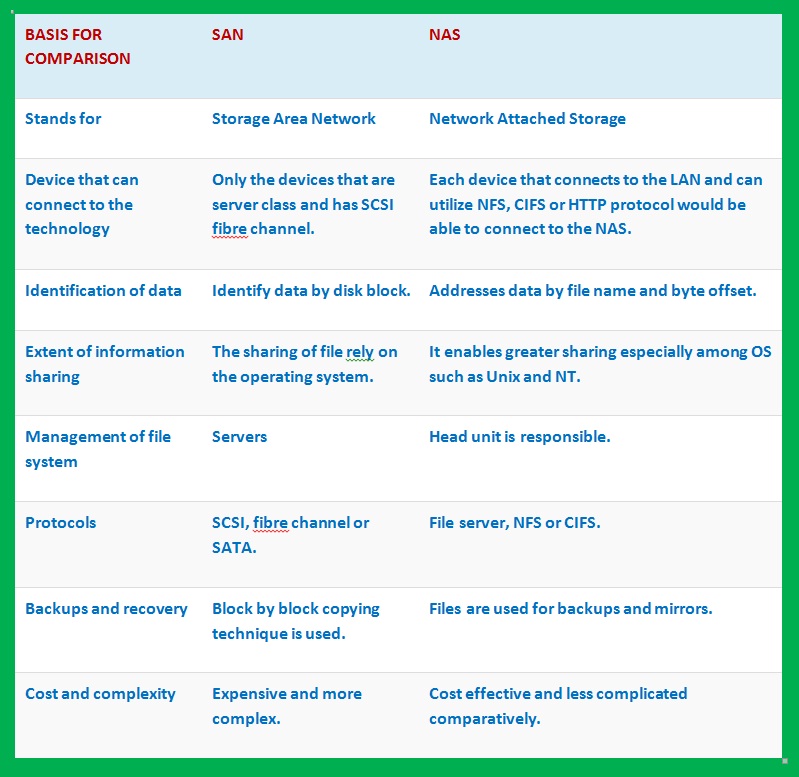Differences between SAN and NAS With Comparison Chart
Before going to know the differences between SAN and NAS, what is meant by NAS and SAN?
What is meant by SAN and NAS?
SAN is termed as (Storage Area Network) and NAS is termed as (Network Attached Storage) are both network storage solutions.
- SAN is a block of device from a disk which delivered over the network.
- In this you can place a file system upon it before it can be used.
- Technologies to do this include IDE, SCSI, and SATA.
NAS is a single storage device while SAN is a local network of multiple devices.
- NAS is a file system delivered over the network.
- It is ready to mount and use.
- Technology to do this includes NFS, CIFS, and AFS etc.
In this we provide you the information about how to SAN and NAS and differences between them.
Below are the differences between the SAN and NAS.
Comparison Chart

Main differences between SAN and NAS
Both usually utilize RAID, and both typically offer a variety of storage management and data protection features.
So both we can choose and both have the same features but some differences are as follows.
Wiring and Protocol: both SAN and NAS are supported for the wiring and protocol. But the major differences are as follows.
- SAN typically utilizes Fiber channel connectivity, where as NAS utilizes TCP/IP networks, such as Ethernet.
- SAN access data as blocks, while NAS access data as files.
Technology: The difference between the SAN and NAS technology are as follows.
- NAS requires dedicated piece of hardware usually referred to as the head of the head, which connects to the LAN.
- Whereas SAN uses fiber channel and connects via storage devices that are capable of sharing certain low-level data among themselves.
But in future SAN is becoming more like NAS in that SAN products are transitioning away from the Fiber channel to the more readily more embarrassed IP based approach.